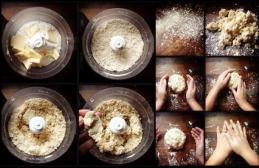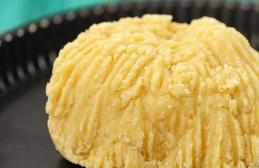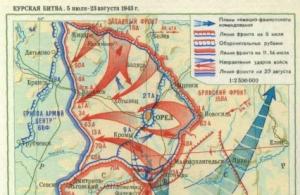Industrial emissions into the atmosphere. Engineering calculations and inventory
I. M. Kvashnin
The book was published by the ABOK Association with the support of the Arktika company. The author of the book is Candidate of Technical Sciences I. M. Kvashnin.
In the book “Industrial emissions into the atmosphere. Engineering Calculations and Inventory" summarizes numerous methods for calculating emissions for various sectors of industry and transport, provides 62 detailed examples of calculating emissions and releases of pollutants, and also provides 54 appendices that contain all reference regulatory material and the necessary initial data for calculating industrial emissions.
The book “Industrial emissions into the atmosphere. Engineering calculations and inventory" consists of four chapters. The first chapter provides brief information on industrial ventilation, basic environmental terms and definitions. It has been shown that pollutants released from equipment are distributed when released into the atmosphere between local and general ventilation systems. The term “local suction efficiency coefficient” was introduced, which is absent in the current regulatory methods for calculating emissions. There are more than a hundred methods for calculating emissions for various industries and transport. The calculation formulas in them are scattered, not systematized, and duplicated in various forms.
In the second chapter, the author makes an attempt to reduce the most commonly used data to four methods for calculating emissions: by equipment characteristics; by specific emissions of pollutants per unit measure of the material used; according to a given intensity of evaporation from the surface; according to the balance of pollutants contained in materials and released. As a result, gram-second and gross (tons per year) emissions of pollutants are determined. Fourteen years of experience were used in developing the “Environmental Protection” section of the construction project, inventory and draft standards for maximum permissible emissions into the atmosphere of industrial facilities.
The third chapter provides 62 detailed examples of calculating emissions and releases of pollutants: during mechanical processing of metals and wood, during welding, when applying paint and varnish coatings, from linear production, during heat treatment of metals, during the production of plastic products, when applying electroplating, in the production of electronic equipment, from unorganized sources, from parking lots and car repair shops. The fourth chapter is devoted to the development of an inventory of sources of emissions of pollutants into the atmosphere. The procedure for its implementation is presented based on the considered examples of emission calculations.
The value of the publication lies in the presence of 54 appendices, which contain all the reference regulatory material and the necessary initial data for calculating emissions.
The book “Industrial emissions into the atmosphere. Engineering calculations and inventory" is addressed to design engineers of industrial ventilation facilities; engineers involved in the design of environmental documentation; environmental engineers of industrial enterprises, as well as students of all engineering specialties, construction and polytechnic profiles. The book “Industrial emissions into the atmosphere. Engineering calculations and inventory" can serve as a teaching aid and will be of undoubted benefit to students of specialty 270109 "Heat and Gas Supply and Ventilation" when studying the courses "Industrial Ventilation" and "Air Protection".
The book “Industrial emissions into the atmosphere. Engineering calculations and inventory" is also intended for environmental students in the following specialties:
- 280201 “Environmental protection and rational use of natural resources”;
- 280202 "Engineering environmental protection";
- 020801 "Ecology";
- 020802 "Nature management".
PREFACE
The problem of urban air pollution is currently extremely relevant. Initially, harmful (pollutant) substances are formed in the air of industrial buildings, and then thrown out and dispersed in the atmosphere. Calculations of released and emitted pollutants must be carried out both in industrial ventilation and in industrial ecology. However, the approach to these calculations is different and suffers from some one-sidedness and incompleteness. The general picture of ensuring standardized air parameters inside and outside industrial buildings has inconsistencies and contradictions.
Ventilation engineers know that harmful emissions from any equipment, as a rule, are localized and removed for the most part by local exhaust ventilation systems. The uncollected part of the pollutants enters the indoor air and is removed by general exhaust ventilation systems. When designing, the required volume of air removed by local exhaust is calculated, assuming that the bulk of pollutants is carried away with it. Knowledge of mass gram-second emissions and emissions of pollutants through local systems will make it possible to determine the required degree of purification and, accordingly, the use of a particular dust and gas collection device after dispersion and standardization of emissions. In accordance with SNiP 2.04.05-91*, the volume of supply air should be calculated based on the mass of released harmful or explosive substances entering the room air. These data are traditionally presented by technologists according to industry process design standards, which were issued before the 1980s and in some cases contradict current methods for calculating emissions of pollutants into the atmosphere.
There is very little information about the effectiveness of trapping harmful substances using local suction. The exception is the research of V.N. Posokhin, which we used. The problem is complicated by the fact that if local suction is used incorrectly, the efficiency drops sharply and it is not possible to achieve the required air parameters in the work area.
Environmental methods for calculating emissions, in our opinion, have a common drawback: there is no separation of released pollutants between local and general ventilation when they are released into the atmosphere. This leads to the fact that harmfulness is considered only through local systems, and general exchange systems are ignored. Experienced environmental engineers manually calculate this division on their own. Only the 2002 methodological manual proposes such a division for mechanical processing of metals. The exception is the methodology, where the efficiency of local suction is assumed to be 90%, but nothing is said about how to take into account emissions of the uncaptured 10% of harmful substances.
In connection with the above, this publication introduces the concept of local suction efficiency coefficient Kmo, which shows what proportion of the total mass of the released pollutant is captured by local suction and released into the atmosphere by local exhaust ventilation.
The book attempts to classify and bring to uniformity the most commonly used methods for calculating emissions:
- according to the characteristics of the equipment;
- by specific allocations per unit measure (mass, length, area, volume) of the material used;
- according to a given evaporation rate per unit surface;
- on the balance of masses of materials and pollutants (when applying paint and varnish coatings; during mechanical processing of wood, when pouring bulk materials, etc.).
Some techniques are essentially combinations of those named taking into account the specifics of the technology. This can be seen from examples of calculations of emissions from the production of electronic equipment and from parking lots and car repair shops.
The methods were used to solve examples of calculating emissions into the atmosphere for the following industries: mechanical processing of metals; metal welding; various types of metal casting; their heat treatment; application of galvanic and paint coatings; mechanical processing of wood; production of plastic products; processing of printed circuit board blanks, soldering and sealing of electronic equipment products; car parking and repair; pouring bulk materials. A total of 62 examples were considered with various combinations of operation of local and general ventilation systems, with and without emissions purification in dust and gas collection devices.
Chapter 4 describes the methodology and example of performing an inventory of sources of emissions of pollutants into the atmosphere for an enterprise.
The appendices include all the necessary initial data for calculating emissions from the listed types of production, which are adopted according to current industry methods.
This publication may raise many questions among specialists both in the field of ventilation and in the field of ecology in connection with the existing traditional approach. However, we hope that it will be useful and will more fully illuminate the problem of calculating the release and emissions of pollutants into the atmosphere.
The book attempts to systematize various methods for calculating emissions of pollutants into the atmosphere. The most commonly used data are reduced to four methods for calculating emissions: according to the characteristics of the equipment, according to the specific emissions of pollutants per unit measure of the material used, according to a given rate of evaporation from the surface, according to the balance of pollutants contained in the materials and released.
62 test examples are given for calculating emissions and releases of pollutants: during mechanical processing of metals and wood, during welding, during application of paints and varnishes, from linear production, during heat treatment of metals, in the production of plastic products, during the application of galvanic coatings, in the production of radio electronics. equipment, from unorganized sources, from parking lots and car repair shops.
The publication is addressed to industrial ventilation design engineers, environmental engineers at industrial enterprises, environmental documentation designers, as well as students of civil engineering and environmental specialties.
Document volume 389 pages.
Preface
Chapter 1. Brief information on industrial ventilation. Basic environmental terms and definitions
1.1. Brief information on industrial ventilation
1.1.1. Characteristics of local and general exhaust ventilation
1.1.2. Characteristics of local suctions
1.1.3. Characteristics of dust and gas collection devices
1.2. Basic environmental terms and definitions
Chapter 2. Methods for calculating industrial emissions into the atmosphere
2.1. Methodology for calculating emissions based on equipment characteristics
2.2. Methodology for calculating emissions based on specific emissions of pollutants per unit mass of consumable material; unit of length, area and volume
2.3. Methodology for calculating emissions when applying paint and varnish coatings
2.4. Methodology for calculating emissions at a given rate of evaporation of pollutants from a unit surface and during the application of galvanic coatings
2.5. Methodology for calculating emissions in the production of radio-electronic equipment
2.6. Methodology for calculating emissions of pollutants from parking lots and car repair shops
2.6.1. Pollutant emissions from parking lots
2.6.2. Pollutant emissions during vehicle maintenance and repair
2.6.3. Emissions of pollutants during the repair of rubber products
2.6.4. Emissions of pollutants during copper works
2.6.5. Emissions of pollutants during washing of parts, assemblies and assemblies
2.7. Methodology for calculating dust emissions during mechanical processing of wood
2.8. Methodology for calculating dust emissions of bulk materials from unorganized sources
Chapter 3. Examples of calculating industrial emissions into the atmosphere
3.1. Examples of calculating emissions from metal machining
3.1.1. Sharpening area. IZA 1
3.1.2. Mechanical section. IZA 2, 3, 4
3.1.3. Grinding section of a mechanical workshop. IZA 5, 6, 7
3.2. Examples of calculating emissions during welding operations
3.2.1. Section for manual electric arc welding of steel with stick electrodes. IZA 8, 9
3.2.2. Welding area. IZA 10, 11, 12, 13
3.2.3. Plasma cutting site for aluminum alloys. IZA 14
3.3. Examples of calculating emissions when applying paints and varnishes. Painting area. IZA 15, 16, 17
3.4. Examples of calculating emissions from foundries and heat treatment of metals 76
3.4.1. Non-ferrous casting area. IZA 18, 19, 20
3.4.2. Model making area for lost wax casting. IZA 21, 22
3.4.3. Area for coating paraffin blocks during investment casting. IZA 23, 24
3.4.4. Precision casting area. IZA 25, 26, 27, 28, 29, 30
3.4.5. Pickling area. IZA 31, 32
3.4.6. Roughing and grinding section. IZA 33
3.4.7. Thermal area. IZA 34, 35, 36
3.5. Examples of emission calculations in the production of plastic products
3.5.1. Injection molding machine section. IZA 37
3.5.2. Production area for phenolic plastic parts. IZA 38, 39
3.6. Examples of emission calculations for electroplating
3.6.1. Degreasing area. IZA 40
3.6.2. Galvanic section. IZA 41, 42, 43
3.7. Examples of calculating emissions in the production of radio-electronic equipment
3.7.1. Printed circuit board cutting area. IZA 44
3.7.2. PCB drilling area. IZA 45, 46
3.7.3. Photoresist application area. IZA 47, 48, 49, 50
3.7.4. Area for plating and soldering of products. IZA 51
3.7.5. Installation area. IZA 52
3.7.6. Sealing area. IZA 53, 54
3.8. Examples of calculating emissions from parking lots and car repair shops
3.8.1. Outdoor parking. IZA 55
3.8.2. Battery charging department. IZA 56
3.8.3. Battery repair department. IZA 57
3.8.4. Vulcanization area. IZA 58
3.8.5. Area for washing parts, components and assemblies. IZA 59
3.9. Examples of calculating emissions from mechanical wood processing. Woodworking area. IZA 60, 61
3.10. An example of calculating dust emissions from bulk materials from unorganized sources.
Post for unloading from railway cars and static storage of crushed granite rocks in an open warehouse. IZA 62
Chapter 4. Inventory of emissions of pollutants into the atmosphere
4.1. Inventory methodology 4.2. Example of performing an inventory Bibliography
Appendix 1. Codes and maximum permissible concentrations of pollutants by type of production
Appendix 2. Characteristics and mass release of pollutants from metal machining equipment
Appendix 2.1. Emission of dust during mechanical processing of metals without cooling
Appendix 2.2. Dust emissions during mechanical processing of metals in galvanic production
Appendix 2.3. Dust emissions during abrasive sharpening of cutting tools
Appendix 2.4. Dust emissions during machining of cast iron and non-ferrous metals
Appendix 2.5. Emissions (g/s) of oil and emulsol aerosols during mechanical processing of metals with cooling
Appendix 2.6. Specific emissions of pollutants from electrical erosion machines
Appendix 3. Specific emissions of pollutants during welding, surfacing, cutting of metals and alloys
Appendix 3.1. Specific emissions of pollutants during welding and surfacing of metals
Appendix 3.2. Specific emissions of pollutants when cutting metals and alloys
Appendix 3.3. Specific emissions of pollutants during arc surfacing with gas plasma spraying
Appendix 3.4. Specific emissions of pollutants during resistance gas welding and metallization
Appendix 4. Composition of paints and varnishes at initial viscosity
Appendix 5. Specific emissions of pollutants during the production of reinforced concrete products
To narrow down the search results, you can refine your query by specifying the fields to search for. The list of fields is presented above. For example:
You can search in several fields at the same time:
Logical operators
The default operator is AND.
Operator AND means that the document must match all elements in the group:
research development
Operator OR means that the document must match one of the values in the group:
study OR development
Operator NOT excludes documents containing this element:
study NOT development
Search type
When writing a query, you can specify the method in which the phrase will be searched. Four methods are supported: search taking into account morphology, without morphology, prefix search, phrase search.
By default, the search is performed taking into account morphology.
To search without morphology, just put a “dollar” sign in front of the words in the phrase:
$ study $ development
To search for a prefix, you need to put an asterisk after the query:
study *
To search for a phrase, you need to enclose the query in double quotes:
" research and development "
Search by synonyms
To include synonyms of a word in the search results, you need to put a hash " #
" before a word or before an expression in parentheses.
When applied to one word, up to three synonyms will be found for it.
When applied to a parenthetical expression, a synonym will be added to each word if one is found.
Not compatible with morphology-free search, prefix search, or phrase search.
# study
Grouping
In order to group search phrases you need to use brackets. This allows you to control the Boolean logic of the request.
For example, you need to make a request: find documents whose author is Ivanov or Petrov, and the title contains the words research or development:
Approximate word search
For an approximate search you need to put a tilde " ~ " at the end of a word from a phrase. For example:
bromine ~
When searching, words such as "bromine", "rum", "industrial", etc. will be found.
You can additionally specify the maximum number of possible edits: 0, 1 or 2. For example:
bromine ~1
By default, 2 edits are allowed.
Proximity criterion
To search by proximity criterion, you need to put a tilde " ~ " at the end of the phrase. For example, to find documents with the words research and development within 2 words, use the following query:
" research development "~2
Relevance of expressions
To change the relevance of individual expressions in the search, use the " sign ^
" at the end of the expression, followed by the level of relevance of this expression in relation to the others.
The higher the level, the more relevant the expression is.
For example, in this expression, the word “research” is four times more relevant than the word “development”:
study ^4 development
By default, the level is 1. Valid values are a positive real number.
Search within an interval
To indicate the interval in which the value of a field should be located, you should indicate the boundary values in parentheses, separated by the operator TO.
Lexicographic sorting will be performed.
Such a query will return results with an author starting from Ivanov and ending with Petrov, but Ivanov and Petrov will not be included in the result.
To include a value in a range, use square brackets. To exclude a value, use curly braces.
Vendor code: 123
Number of pages: 392
Color: b/w
Format: 70x108/16
Year of issue: 2005
ISBN: 5-98267-011-1
Price: 649.00 rub.
The book summarizes numerous methods for calculating emissions for various sectors of industry and transport, provides 62 detailed examples of calculating emissions and emissions of pollutants, and also provides 54 appendices that contain all the reference regulatory material and the necessary initial data for calculating industrial emissions.
Book “Industrial emissions into the atmosphere. Engineering calculations and inventory" consists of four chapters. The first chapter provides brief information on industrial ventilation, basic environmental terms and definitions. It has been shown that pollutants released from equipment are distributed when released into the atmosphere between local and general ventilation systems. The term “local suction efficiency coefficient” was introduced, which is absent in the current regulatory methods for calculating emissions.
There are more than a hundred methods for calculating emissions for various industries and transport. The calculation formulas in them are scattered, not systematized, and duplicated in various forms.
In the second chapter, the author makes an attempt to reduce the most commonly used data to four methods for calculating emissions: by equipment characteristics; by specific emissions of pollutants per unit measure of the material used; according to a given intensity of evaporation from the surface; according to the balance of pollutants contained in materials and released. As a result, gram-second and gross (tons per year) emissions of pollutants are determined. Fourteen years of experience were used in developing the “Environmental Protection” section of the construction project, inventory and draft standards for maximum permissible emissions into the atmosphere of industrial facilities.
The third chapter provides 62 detailed examples of calculating emissions and releases of pollutants: during mechanical processing of metals and wood, during welding, when applying paint and varnish coatings, from linear production, during heat treatment of metals, during the production of plastic products, when applying electroplating, in the production of electronic equipment, from unorganized sources, from parking lots and car repair shops. The fourth chapter is devoted to the development of an inventory of sources of emissions of pollutants into the atmosphere. The procedure for its implementation is presented based on the considered examples of emission calculations.
The value of the publication lies in the presence of 54 appendices, which contain all the reference regulatory material and the necessary initial data for calculating emissions.
Book “Industrial emissions into the atmosphere. Engineering calculations and inventory" addressed to design engineers of industrial ventilation facilities; engineers involved in the design of environmental documentation; environmental engineers of industrial enterprises, as well as students of all engineering specialties, construction and polytechnic profiles. The book “Industrial emissions into the atmosphere. Engineering calculations and inventory" can serve as a teaching aid and will be of undoubted benefit to students of specialty 270109 "Heat and Gas Supply and Ventilation" when studying the courses "Industrial Ventilation" and "Air Protection".
Book “Industrial emissions into the atmosphere. Engineering calculations and inventory" also intended for environmental students specializing in:
- 280201 “Environmental protection and rational use of natural resources”;
- 280202 "Engineering environmental protection";
- 020801 "Ecology";
- 020802 "Nature management".
| People who bought this product also bought |








